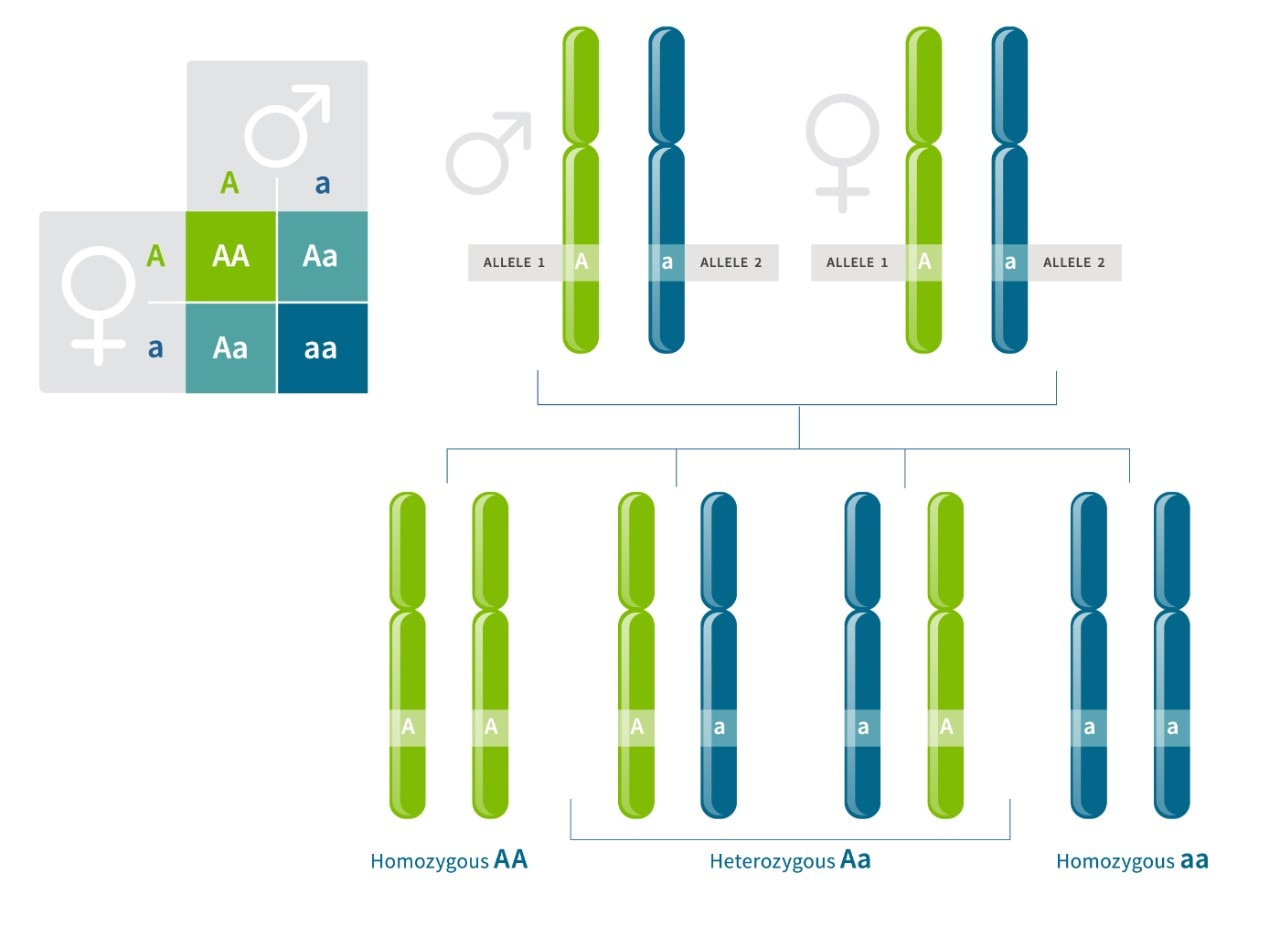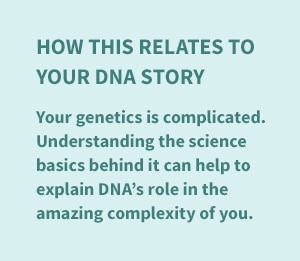What Is a Genotype?
A genotype is the state of your DNA at a set of genetic markers or genes in your genome. Genotypes can represent your specific DNA sequence, for example, whether you carry an A nucleotide or C nucleotide at a specific site in your DNA. They can also represent whether you carry a certain version of a gene or set of genes. Scientists can read your DNA and determine your genotypes using genome sequencing or DNA genotyping techniques.
 Your different genotypes can affect your physical traits—also called phenotypes. For instance, different genotypes at several sites in the DNA are why some people have freckles and others don’t.
Your different genotypes can affect your physical traits—also called phenotypes. For instance, different genotypes at several sites in the DNA are why some people have freckles and others don’t.
Genotype can also refer to a gene or set of genes that leads to a single trait. For example, if your MC1R gene leads to you having red hair, then you have the genotype for red hair.
Genotype and Alleles
Despite the fact that the DNA of all humans is 99.9% identical, there are millions of locations in the DNA where two individuals might differ. The location in the DNA for one of these differences is called its locus, and the different versions of the DNA at that location are known as alleles.
 Every site in an individual’s DNA carries two alleles. This is because humans are diploid, meaning they have two copies of each chromosome — one from each biological parent. The pair of alleles from the two chromosomes makes up your genotype at that locus. A combination of genotypes, often inherited together and shared within a lineage, is referred to as a haplotype.
Every site in an individual’s DNA carries two alleles. This is because humans are diploid, meaning they have two copies of each chromosome — one from each biological parent. The pair of alleles from the two chromosomes makes up your genotype at that locus. A combination of genotypes, often inherited together and shared within a lineage, is referred to as a haplotype.
The two alleles for a locus that make up your genotype may be the same or they may be different. If an individual carries two copies of the same allele their genotype is said to be homozygous. If they carry two different alleles they are heterozygous.
For example, the gene for the trait earwax type has two alleles: one for wet earwax and one for dry earwax. An individual who is homozygous for wet ear wax carries two copies of the wet earwax gene. If they are homozygous for dry ear wax they carry two copies of the dry earwax gene. An individual who is heterozygous has one copy of the wet earwax gene and one copy of the dry earwax gene.
Dominant and Recessive Alleles
Alleles can combine in different ways to affect a person’s traits. For instance, your sensitivity to bitter tastes is influenced by a gene that comes in two versions; a “taster” and a “non-taster” version. The “taster” version of the gene is dominant, which means if you carry at least one copy of that version you’ll have some sensitivity to bitter flavors. The “non-taster” version is recessive, which means you’ll only be insensitive to bitter flavors if you carry two copies of the “non-taster” gene.
Whether an allele is dominant or recessive doesn’t indicate whether it will be common or uncommon. Sometimes, the recessive allele is more common than the dominant allele. And not every allele is dominant or recessive. Sometimes two alleles might be codominant, meaning they combine to make a trait. For example, this is the case when someone has the AB blood type. In this case, the person has both the A allele and the B allele, and both alleles are equally represented in the trait.
Traits with Dominant and Recessive Alleles
Genotype vs. Phenotype
Genotype refers to all the pairs of alleles of genes that an individual carries. Phenotype is the term for all the observable characteristics for which the genes code—for example hair color, blood type, lactose tolerance. In other words, the genotype refers to the genetic information, while the phenotype refers to the observable characteristics, including traits.
Genotypes influence phenotypes, but they are not always perfectly correlated. Phenotype is also influenced by environmental factors, and a single phenotype could be the result of more than one genotype. For example, a phenotype like height is influenced by thousands of different genes and genetic variants. As well, environmental factors like early childhood nutrition dramatically impact an individual’s height in adulthood. Both genes and environment play an important role in height as a phenotype.
References
Whole Genome Association Studies, National Human Genome Research Institute. Accessed July 18, 2022. https://www.genome.gov/17516714/2006-release-about-whole-genome-association-studies.